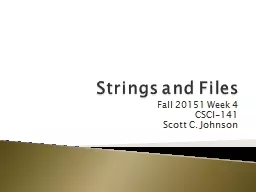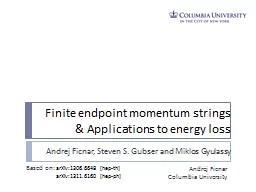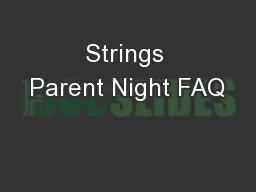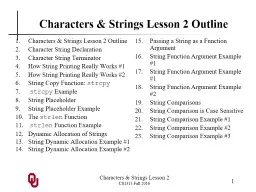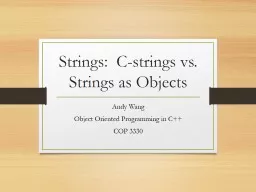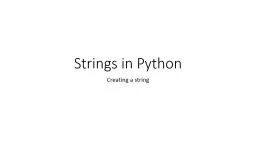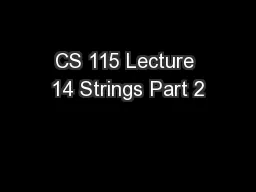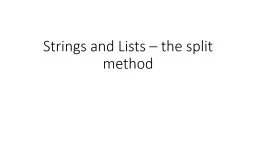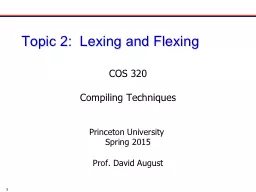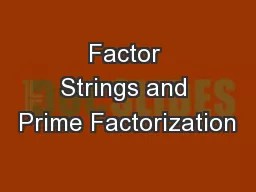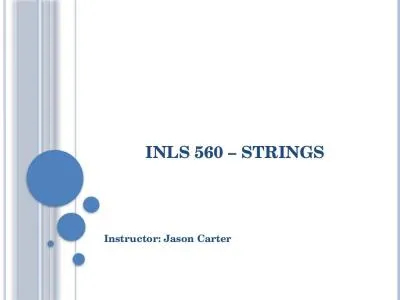PPT-Strings and Files
Author : test | Published Date : 2015-11-21
Fall 20151 Week 4 CSCI141 Scott C Johnson Computers can process text as well as numbers Example a news agency might want to find all the articles on Hurricane
Presentation Embed Code
Download Presentation
Download Presentation The PPT/PDF document "Strings and Files" is the property of its rightful owner. Permission is granted to download and print the materials on this website for personal, non-commercial use only, and to display it on your personal computer provided you do not modify the materials and that you retain all copyright notices contained in the materials. By downloading content from our website, you accept the terms of this agreement.
Strings and Files: Transcript
Download Rules Of Document
"Strings and Files"The content belongs to its owner. You may download and print it for personal use, without modification, and keep all copyright notices. By downloading, you agree to these terms.
Related Documents

